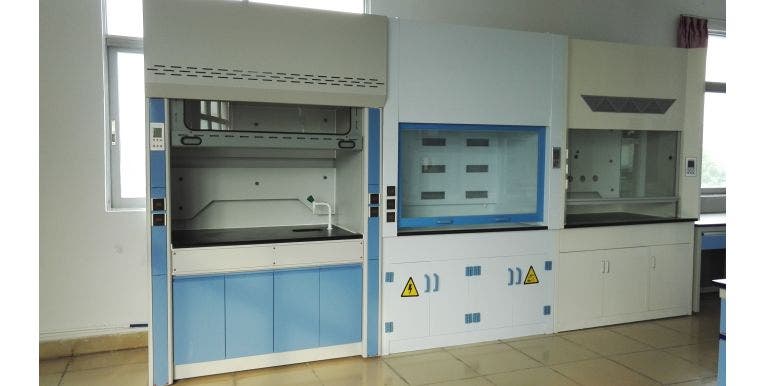Ducted vs Recirculating Fume Hoods: Similarities and Differences
Fume hoods are essential equipment in the laboratory, offering protection against exposure to hazardous fumes, dust, and airborne particulates. They provide ventilation and control the spread of volatile and potentially harmful substances produced during laboratory experiments.
There are broadly two types of fume hoods named as ducted and recirculating. Both types have unique features and applications.
This blog provides an in-depth comparison between Ducted vs Recirculating Fume Hoods and helps to choose the best type for your laboratory.
How to Choose Between Ducted vs Recirculating Fume Hoods?
Fume hoods are devices used in laboratories to safely ventilate and remove hazardous fumes, gasses, and particles, thereby protecting lab workers from exposure to toxic substances. Fume hoods are of two types, ducted and recirculating.
Both have unique advantages and drawbacks, depending on the specific use case. Choosing between Ducted vs Recirculating Fume Hoods primarily depends on the laboratory's specific needs, budget, and installation process.
Let’s explore each type of fume hood to understand the advantages and drawbacks of each type.
1. Ducted Fume Hoods
A ducted fume hood is essential lab equipment. It is also known as a vented fume hood. It is designed to extract hazardous fumes and vent them outside the building. They are connected to an exterior exhaust system through a duct network. They are used in labs dealing with a high volume of hazardous or volatile substances.
Advantages
The ducted fume hoods have the following benefits:
- High Capacity
Ducted fume hoods can handle many chemicals, including highly toxic and radioactive substances.
- High Efficiency
They can effectively remove all types of fumes, particulates, and aerosols, reducing the risk of exposure.
- No Filter Replacement
Unlike recirculating hoods, they do not require filter changes, which can be a cost and maintenance benefit over time.
- Continuous Removal of Contaminants
Since the contaminated air is expelled from the building, there is no risk of re-circulating harmful fumes back into the lab.
Drawbacks
Ducted fume hoods have the following disadvantages:
- High Installation Cost
Ducted fume hoods need significant infrastructure, including ductwork and exterior exhaust systems. Their installation can be time-consuming and expensive.
- Energy Use
They consume more energy as they continuously expel conditioned indoor air outside, which needs to be replaced with fresh, conditioned air.
- Lack of Mobility
Due to their dependence on ductwork, they are less flexible and cannot be easily relocated within the laboratory.
2. Recirculating Fume Hoods
A Recirculating fume hood is also known as a ductless fume hood. It filters the contaminated air through activated charcoal and other specialized filters and then recirculates it back into the lab.
Advantages
Ductless fume hoods have the following advantages:
- Easy Installation
Recirculating hoods are independent units that do not require an elaborate ductwork system, making them easier and quicker to install.
- Energy Efficiency
They recycle the conditioned air within the laboratory, making them more energy-efficient than ducted fume hoods.
Mobility
They can be moved easily within the lab as per changing requirements.
Drawbacks
- Limited Capacity
They are not suitable for handling highly toxic, carcinogenic, or radioactive substances. Their usage depends on the type of filters installed.
- Filter Replacement
The filters in these hoods need regular replacement, which adds to the operating costs and requires careful handling of contaminated filters.
- Lower Efficiency
While they're excellent for many applications, ducted hoods may only remove some contaminants as efficiently as ducted hoods, particularly for more complex or diverse chemical applications.
Making a Choice: Ducted Vs. Recirculating Fuming Hoods
Choosing between ducted vs recirculating fume hoods depends on several factors, which are as follows:
Type of Chemicals Used
A ducted fume hood might be the better choice if your lab handles a wide range of chemicals, especially those generating hazardous gasses. In contrast, a recirculating fume hood can be suitable for labs dealing with a narrow, known spectrum of chemicals compatible with the filters.
Budget Constraints
A recirculating fume hood could be more cost-effective due to its easy installation and energy efficiency features.
Lab Flexibility
If you need the flexibility to move or rearrange lab equipment frequently, a recirculating fume hood would be a more practical choice.
Fume Hood vs Safety Cabinet: Which One is Better?
Fume hoods are often confused with safety cabinets. It is important to understand the difference between the two. A fume hood is significantly different from a safety cabinet. A fume hood ventilates and removes hazardous fumes and particles, protecting lab users from toxic airborne substances.
In contrast, a safety cabinet (or biosafety cabinet) is designed to contain biohazardous materials, providing a sterile environment and preventing experiment contamination to the user.
A fume hood is better at containing and venting off hazardous fumes, making it ideal for experiments with volatile or toxic substances. Whereas a safety cabinet might not fully protect you from these dangerous vapors. So, fume hoods are more dater and better than safety cabinets.
Meanwhile, fume hoods play an essential role in ensuring the safety of laboratory environments. Both ducted and recirculating fume hoods have their unique strengths and limitations.
The choice between a ducted and a recirculating fume hood should be made carefully - considering the type of chemicals used, budget constraints, and flexibility within the lab setup. By understanding each type's unique features, benefits, and limitations, laboratories can select the most suitable fume hood that aligns with their specific needs and maintains the highest level of safety.
Discover a safer, more efficient laboratory environment with Westlab, your trusted brand for lab supplies Canada. If you're looking for fume hoods, we offer a wide range of ducted and ductless fume hoods for laboratories. Explore an extensive range of fume hoods at our website.
Shop online at Weslab Canada today and equip your lab with fume hoods to ensure lab safety!


